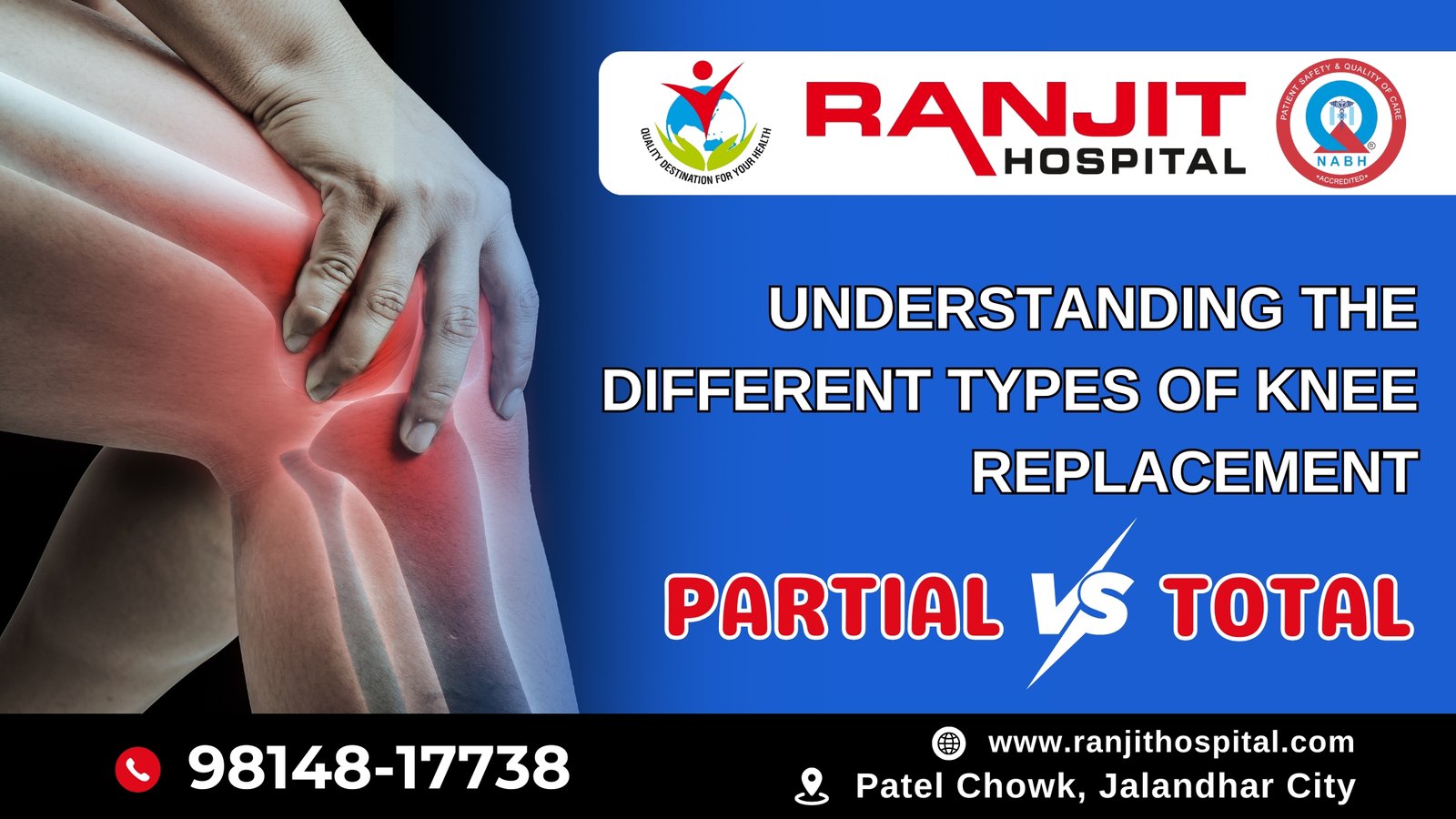
The issues of knee pain and arthritis are the most prevalent, which can severely restrict a person’s normal lifestyle, making even minor movements very hard and hurting. For the severe pain in the knee and even the dying arthritis, one of the treatments that are considered to be the most effective is knee replacement surgery. But before considering surgery, it is important first to know about the two major techniques that are – Partial Knee Replacement (PKR) and Total Knee Replacement (TKR).
In Ranjit Hospital Jalandhar, patients receive comprehensive evaluation and therapy to ensure the optimal outcomes under the professional guidance of Dr. Tarundeep Singh, Consultant Orthopaedic Surgeon.
What Is Partial Knee Replacement?
Partial Knee Replacement or unicompartmental knee replacement can only be performed on some patients’ knees. The procedure is ideal for patients whose conditions are restricted to one compartment of the knee, either due to degenerative joint disease or trauma.
The main benefits of PKR include the following:
- Less invasive surgery accompanied by smaller incisions
- Quick recovery that often allows the patients to get back to their daily activities sooner
- Maintaining of the functional bone and ligaments for more natural knee motion
- Less post-operative pain than with total knee replacement
However, the PKR is not an option for all patients. Those with extensive arthritis affecting most parts of the knee may need a total knee replacement to achieve the best result.
What Is Total Knee Replacement?
Total Knee Replacement involves the removal of the entire knee joint and its replacement with a prosthetic implant. This surgery is recommended for patients who suffer from severe arthritis or multiple-compartment joint destruction.
Total Knee Replacement (TKR) comes with a set of benefits:
- It gives patients complete relief from knee pain.
- It allows the whole joint to be more stable and mobile.
- The modern implants are designed to last as long as 20 years making it a long-term solution.
- Even patients with significant knee arthritis or deformities can still be surgically treated.
The duration of recovery is longer for total knee replacement when compared with partial knee replacement surgery and physical therapy is an integral part of recovery, as it helps to restore strength and range of motion.
How to Choose Between Partial and Total Knee Replacement?
Choosing the right type of knee replacement depends on several factors such as:
- The extent and location of arthritis
- The patient’s age and activity level
- Overall health and lifestyle
At Ranjit Hospital Jalandhar, an orthopaedic team led by Dr. Tarundeep Singh conducts comprehensive evaluations to identify the most appropriate surgical technique for every patient. By means of individualized treatment and cutting-edge orthopaedic methods, the patients can look forward to the best healing and permanent comfort.
Empanelments & Cashless Treatment Facilities
Ranjit Hospital, Jalandhar, has made it easier for patients to get reimbursed for their medical bills or even have the bills settled directly with the hospital through a variety of Empanelments that allow cashless treatment facilities.
The hospital has empanelment with:
- ECHS (Ex-Servicemen Contributory Health Scheme)
- CGHS (Central Government Health Scheme)
- FCI (Food Corporation of India)
- Northern Railway
- Himachal Government
- All major private insurances
This not only benefits the patients in terms of cost but also in terms of quality as they are now able to access a full range of orthopaedic treatments and surgeries.
Final Thoughts
The primary benefits of both total and partial knee replacements are the management of pain, the increase of movement, and better quality of life. Patients have come to know the differences between PKR and TKR through informative decision-making, and the setting of realistic recovery and long-term result expectations. With the expert care at Ranjit Hospital, Jalandhar, you can be sure to take steps to get back your mobility and live a life without pain.
